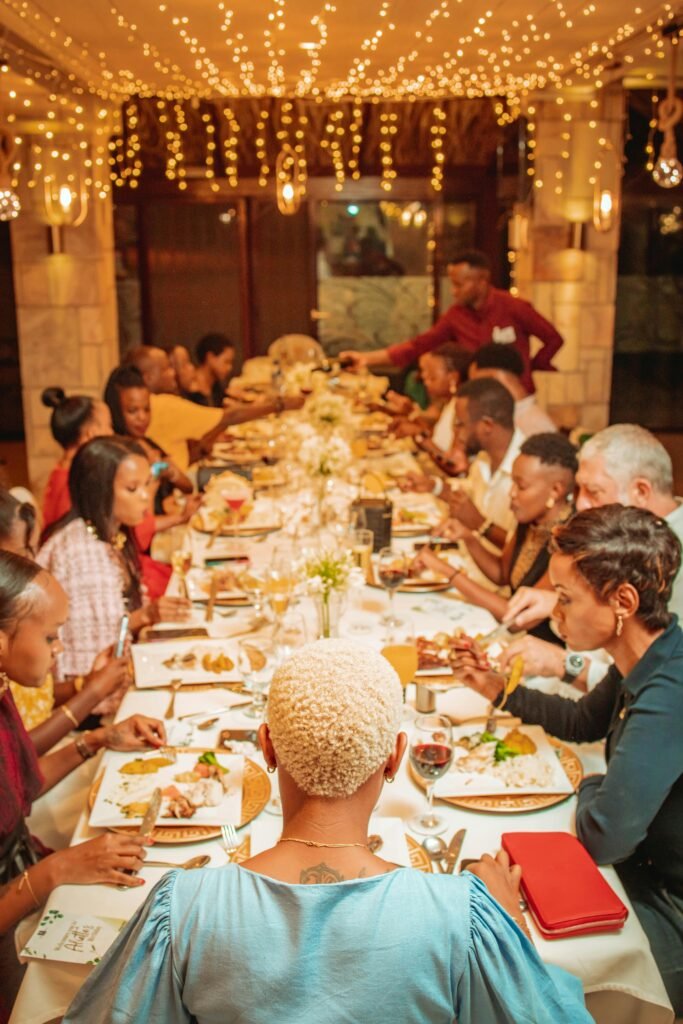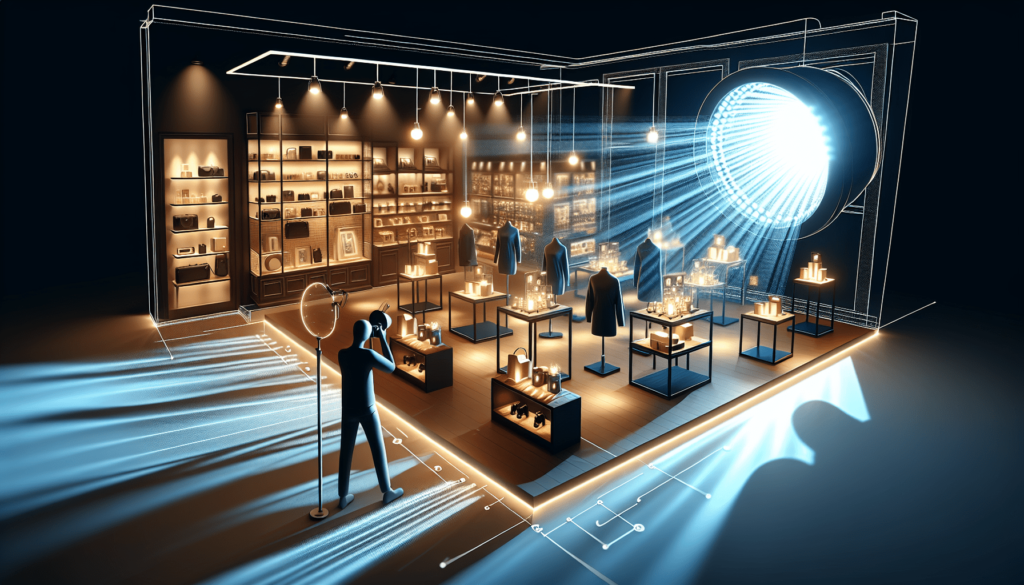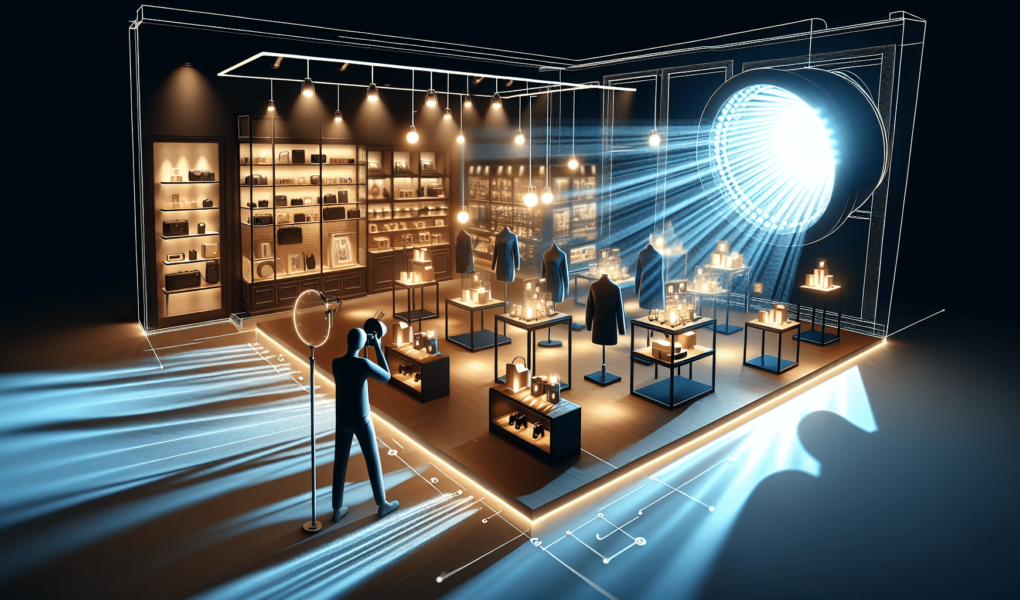Are you a retailer looking to boost your sales and create a memorable shopping experience for your customers? Look no further than the power of effective retail lighting. Lighting plays a crucial role in attracting customers, highlighting products, and influencing purchasing decisions. In this article, we will explore the impact of proper lighting on retail spaces and discuss key strategies to maximize sales through creative and effective lighting techniques. Whether you’re a small boutique or a large department store, the right lighting can make all the difference in creating a vibrant and enticing shopping environment.

Importance of Retail Lighting
Effective lighting is crucial for retail spaces as it serves multiple purposes, ultimately contributing to the success of the business. Retail lighting not only enhances product visibility but also creates an inviting atmosphere, and improves the overall customer experience. By carefully considering and implementing the right lighting strategies, you can significantly impact sales and customer satisfaction in your retail store.
Understanding Lighting Elements
To make informed decisions about your retail lighting, it’s essential to understand the different lighting elements involved. Three key elements of lighting are ambient lighting, task lighting, and accent lighting. Each serves a unique purpose and can be strategically used to elevate your store’s atmosphere and highlight specific areas or products.
Ambient Lighting
Ambient lighting, also known as general lighting, provides overall illumination to the entire space. It ensures that the store is well-lit and helps create a welcoming environment. By selecting the appropriate fixtures and positioning them effectively, you can achieve a consistent and comfortable level of brightness throughout your retail store.
Task Lighting
Task lighting is designed to illuminate specific areas where activities, such as product demonstrations or customer interactions, take place. This type of lighting ensures that these areas are adequately lit, making them visually appealing and functional for both customers and employees. Installing task lighting fixtures strategically will help enhance the overall store experience and improve operational efficiency.
Accent Lighting
Accent lighting is all about creating visual interest by highlighting particular items, displays, or architectural features within your store. It draws attention to specific areas, products, or design elements, guiding customers through the store and focusing their attention. With carefully placed accent lights, you can create an ambiance that highlights key products, promotions, or themed displays, ultimately driving customer engagement and increasing sales.
Choosing the Right Light Bulbs
Selecting the right light bulbs for your retail space is crucial as it impacts overall lighting quality, energy efficiency, and the visual experience for customers. Consider the following factors when choosing light bulbs:
Consider Color Temperature
Color temperature refers to the warmth or coolness of light. It is measured in Kelvin (K). A warm color temperature (around 2700K-3000K) creates a cozy and intimate ambiance, perfect for boutique shops or luxurious settings. On the other hand, cool color temperatures (around 4000K-5000K) create a bright and energetic atmosphere, ideal for supermarkets or stores with high-end products. Understanding the desired atmosphere and product offerings will help you determine the appropriate color temperature for your store.
Evaluate Energy Efficiency
Opting for energy-efficient light bulbs not only reduces energy consumption but also lowers long-term operating costs. Consider using LED bulbs, which consume significantly less energy compared to traditional incandescent bulbs. LED bulbs have a longer lifespan, emit minimal heat, and provide exceptional color rendering capabilities, ensuring your products look their best under the lighting.
Selecting the Right Bulb Type
When it comes to bulb types, there are various options available, including incandescent, fluorescent, halogen, and LED. Each type has its own advantages and considerations. LED bulbs are the most popular choice due to their energy efficiency, long lifespan, and versatility. However, it’s important to evaluate the specific lighting requirements and budget of your retail space to determine the most suitable bulb type for your needs.
Optimizing Store Layout and Design
In addition to selecting the right lighting elements and bulbs, optimizing your store’s layout and design plays a vital role in maximizing the impact of your retail lighting. By strategically highlighting key areas, balancing lighting levels, and directing customers with lighting, you can guide their journey through the store and enhance their overall shopping experience.
Highlighting Key Areas with Lighting
Identify the key areas within your store that you want to emphasize and draw customers’ attention to. This could be high-profit areas, new product displays, or promotional sections. By using accent lighting or increased intensity, you can effectively highlight these areas and create focal points that attract customers’ eyes and encourage them to explore further.
Balancing Lighting Levels
Creating a balanced lighting environment is essential to provide an enjoyable and comfortable shopping experience. Make sure to consider the overall brightness and contrast in different areas of your store, ensuring that no section appears too dark or too bright. By establishing a well-balanced lighting scheme, you can create a visually appealing atmosphere that encourages customers to stay longer and explore more products.
Directing Customers with Lighting
Effective lighting can also be used as a navigation tool, guiding customers through your store intuitively. By strategically illuminating pathways or using directional accent lighting, you can create a seamless flow and help customers navigate through different sections effortlessly. This not only improves their overall shopping experience but also encourages them to discover and engage with more products along the way.

Creating Visual Hierarchy
Creating a visual hierarchy is crucial to effectively showcase your products and entice customers to make purchases. By utilizing lighting techniques to highlight featured products, establishing focal points, and utilizing contrast, you can create visual interest and improve the visibility of your merchandise.
Using Lighting to Highlight Featured Products
Create a visual impact by using accent lighting or spotlights to highlight your featured products or promotions. This draws attention to these items and increases their perceived value, making customers more likely to make a purchase. By strategically positioning lighting fixtures and adjusting their intensity, you can create a visually captivating display that captures customers’ interest and drives sales.
Establishing Focal Points
Establishing focal points throughout your store helps create visual interest and encourages customers to explore different sections. By utilizing accent lighting or unique lighting fixtures, you can draw attention to specific displays or product categories. These focal points serve as visual cues, piquing customers’ curiosity and prompting them to engage with the highlighted items.
Utilizing Contrast to Improve Visibility
Contrast plays a vital role in increasing the visibility of your products and creating visual impact. By using a combination of lighting techniques and adjusting brightness levels, you can create a contrast between products, displays, or wall colors. Brightly lit products against a darker background, or vice versa, create a visually striking effect, making the products stand out and capturing customers’ attention.
Enhancing Color Rendering
Color rendering is the ability of lighting to accurately represent the true colors of objects. It is essential for retail spaces as it directly impacts how customers perceive and evaluate products. By choosing lighting with high Color Rendering Index (CRI), understanding the importance of color, and utilizing color temperature for impact, you can enhance the visual experience and improve sales.
Choosing Lighting with High CRI
CRI measures how well a light source reveals the true colors of objects compared to natural light. Opting for lighting fixtures with a high CRI ensures that your products appear vibrant and true to their actual colors. Ideally, aim for a CRI rating of 80 or above to accurately showcase your merchandise and create a visually appealing shopping environment.
Understanding the Importance of Color
Color psychology plays a significant role in purchasing decisions. Different colors evoke different emotions and have unique associations. Understanding the impact of color on consumers can help you create a harmonious and enticing shopping environment. Consider the mood or message you want to convey and use lighting to enhance the desired emotional response from your customers.
Using Color Temperature for Impact
Color temperature not only affects the ambiance but also influences the perception of products. Warm color temperatures create a cozy and intimate feeling, while cool color temperatures create a bright and energetic atmosphere. Consider the product offerings and target audience of your store when selecting the appropriate color temperature. Make adjustments accordingly to highlight products effectively and create an atmosphere that resonates with your customers.

Controlling Lighting Intensity
Controlling the intensity of lighting in your retail space is crucial to adapting to different occasions, creating specific atmospheres, and conserving energy. Implementing dimmers and controls, adapting lighting to different areas, and using lighting for different store events are effective ways to achieve this.
Implementing Dimmers and Controls
Installing dimmers and lighting controls provides flexibility in adjusting the intensity of your store’s lighting. Dimmers allow you to create different moods and atmospheres throughout the day or for different occasions. For example, dimming the lights during a sale event can create a sense of urgency and highlight specific promotions.
Adapting Lighting to Different Areas
Different areas of your store may require varying lighting intensity. For instance, brighter lighting may be needed in areas such as the entrance or checkout counters to provide better visibility and ensure a sense of security. On the other hand, softer lighting in relaxation areas or fitting rooms can create a calming ambiance. By adapting lighting levels to different areas, you can optimize the overall shopping experience and cater to the specific needs of your customers.
Using Lighting for Different Store Events
Lighting can play a significant role in enhancing the atmosphere during special store events or promotions. By adjusting lighting colors or using dynamic lighting effects, you can create a festive or thematic ambiance that aligns with the event’s theme. This not only attracts customers’ attention but also makes the shopping experience more memorable, encouraging repeat visits and increased customer loyalty.
Incorporating Natural Light
Incorporating natural light into your retail space provides numerous benefits, including energy savings, improved overall ambiance, and increased sales. Maximizing natural light sources, utilizing skylights and windows, and managing glare and heat are essential considerations in utilizing natural light effectively.
Maximizing Natural Light Sources
Identify the natural light sources in your store, such as windows or glass storefronts, and make the most of them. Arrange your store layout to maximize the flow of natural light throughout the space. By strategically positioning displays or merchandise to capture natural light, you can showcase products in their best light, save on energy costs, and create a more welcoming atmosphere.
Utilizing Skylights and Windows
If available, skylights and large windows can be excellent sources of natural light. Design your store layout and shelving to take advantage of these light sources. By minimizing any obstacles that may block natural light, you can allow ample sunlight to flood your space. Utilize sheer window coverings or frosted glass to diffuse direct sunlight and prevent glare while still maintaining a bright and airy atmosphere.
Managing Glare and Heat
While natural light is beneficial, excessive glare and heat can pose challenges in a retail environment. To minimize glare, consider using window treatment options like blinds, shades, or tinted glass. Additionally, installing appropriate shading systems or utilizing reflective surfaces can help control heat gain while still allowing natural light to brighten your space. Managing glare and heat will ensure a comfortable shopping experience for customers while still enjoying the benefits of natural light.

Ensuring Proper Lighting Maintenance
Proper lighting maintenance is essential for ensuring that your retail space continues to benefit from effective lighting. Regular cleaning and replacement of bulbs, checking and adjusting light angles, and addressing maintenance issues promptly contribute to maintaining a well-lit and inviting atmosphere for customers.
Regular Cleaning and Replacement of Bulbs
Dust and dirt can accumulate on lighting fixtures, reducing their efficiency and compromising the quality of lighting. Regularly clean your fixtures and bulbs, ensuring they are free from dirt or debris that may obstruct light output. Additionally, replace any burnt-out or flickering bulbs promptly to maintain consistent lighting levels, preventing dim or dark areas in the store.
Checking and Adjusting Light Angles
Light angles play a crucial role in highlighting products, creating ambiance, and directing customer attention. Regularly inspect the positioning of your lighting fixtures to ensure they are angled correctly and align with your store layout and merchandise. Make any necessary adjustments to ensure that the focal points and desired areas receive adequate illumination for maximum impact.
Addressing Maintenance Issues Promptly
If any lighting maintenance issues arise, such as flickering lights or malfunctioning fixtures, it’s crucial to address them promptly. Prompt maintenance and repair not only prevent disruptions in the store’s lighting but also contribute to a safe and visually pleasing environment for customers. Regularly inspect your lighting system and address any issues to maintain optimal lighting quality and customer satisfaction.
Keeping Up with Lighting Trends
Staying up-to-date with lighting trends is essential to ensure that your retail store remains relevant and competitive. Exploring LED technology, embracing sustainable lighting solutions, and following current lighting design trends can help you create a modern and inspiring ambiance for your customers.
Exploring LED Technology
LED technology has revolutionized the lighting industry with its energy efficiency, longevity, and versatility. LED bulbs are now available in a wide range of color temperatures and designs, making them suitable for various retail applications. Explore the latest LED innovations and consider upgrading your lighting system to reap the benefits of superior performance, reduced energy consumption, and enhanced visual impact.
Embracing Sustainable Lighting Solutions
Sustainability is a growing concern for consumers, and embracing sustainable lighting solutions can position your retail store as an environmentally conscious brand. Consider implementing energy-efficient lighting options, such as LED bulbs, that consume less electricity and have a longer lifespan. Incorporating daylighting strategies and utilizing energy management systems can further enhance your store’s sustainability efforts and reduce your ecological footprint.
Following Current Lighting Design Trends
Keeping an eye on emerging lighting design trends can help you create a contemporary and visually striking store environment. Explore the latest trends in lighting fixtures, styles, and lighting design techniques. This may include incorporating unique fixtures, utilizing dynamic lighting effects, or experimenting with lighting installations that reflect your brand identity. Following current lighting design trends will enable you to create a compelling and visually engaging atmosphere that attracts and delights customers.
By understanding the importance of retail lighting, selecting the right light bulbs, optimizing store layout and design, creating visual hierarchy, enhancing color rendering, controlling lighting intensity, incorporating natural light, ensuring proper lighting maintenance, and keeping up with lighting trends, you can create a retail space that captivates customers, drives sales, and enhances the overall shopping experience. Remember, effective retail lighting is not just about illumination; it’s about creating an inviting and unforgettable environment that encourages customers to engage with your products and keep coming back for more.



